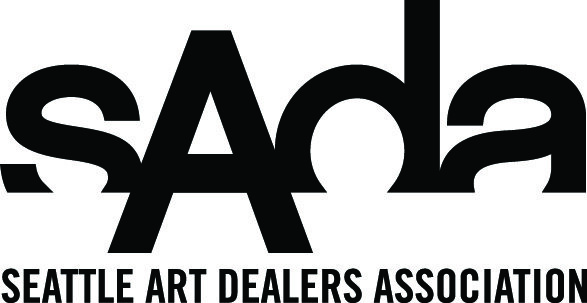Common questions about collecting art:
Is there an admission charge to visit art galleries? Admission to the galleries is always free and the rotating exhibitions mounted by the member galleries of the Seattle Art Dealers Association (SADA) constitute wonderful educational and community resources. However, galleries are privately owned and funded through the sale of works of art they exhibit.
What things should I consider when making a purchasing decision? The great thing about purchasing from a SADA member gallery is the assurance of an artwork’s authenticity and quality as well as the reputation of the gallery. Member galleries adhere to the highest ethical standards as a condition of membership in the Association. Galleries carefully select the artists they represent and exhibit, so they have already given their vote of confidence. If you are new to collecting or have specific objectives, a gallery can advise you.
When purchasing or collecting artwork, it’s good to look around to see the range of what is available among the galleries. Knowing about an artist’s history is helpful and can help reinforce your decision to purchase a certain artist’s work. Galleries generally have information about the artists they work with on the gallery’s website. This information often includes artists’ resumes, images of current and past work, and news about artists’ exhibitions.
What payment arrangements are possible at the galleries? While most galleries accept major credit cards, some prefer payment by check. It is possible in most cases to arrange “time payments” or paying in installments. Ask the gallery if time payments are interest-free or if there are finance charges. Galleries are interested in working with you to make a purchase feasible.
How do I frame my purchase? When work requires framing, choose only museum-quality or archival framing materials. The purpose of framing is primarily to protect the artwork. As a general rule, works on paper are best preserved under glass or acrylic, and it is wise to select glazing that filters out damaging ultra-violet rays. Work that has been framed by the gallery or artist may not necessarily be to your taste, but consider if the artist intended a particular effect in choosing the framing treatment. Galleries can also facilitate framing for you or refer you to experienced local framers.
How do I ship or move my artwork? Many galleries have the resources to package and ship artwork purchased at their galleries. Certain works require more specialized handling. In that case, the gallery would facilitate shipping with an outside company specializing in the crating, soft packaging, and/or the transport of art, whether across town, across the country, or internationally. Be sure to ask how any insurance will be handled.
Galleries have preferred carriers and types of service they use with FedEx, UPS, or certain freight forwarders. If you have definite opinions about a shipper you prefer to use or if there are time constraints, let the gallery know. Safety of the artwork is paramount and galleries have years of experience from which to draw when offering advice. Shipping charges are generally the responsibility of the purchaser. Galleries will readily share information about shipping sources for works already in your possession.
What about installation? Installation may occasionally be offered as a service of the gallery, but a gallerist might also refer you to local art professionals who specialize in installation when a given artwork or a particular context requires it. In some situations the artist may be called upon to install the work and additional charges may apply to cover the artist’s time, particularly if the installation is in a customized situation.
How can I have my artwork appraised? A bill of sale will serve as documentation of the artwork for current insurance purposes, but the value of artwork changes over time depending on the market for an artist’s work. It is important to keep a file containing bills of sale.
A gallery can help you place an approximate value on the work, based on current comparable sales, but a formal appraisal by a certified art appraiser is recommended for artwork of considerable value. For legal purposes, certain insurers and the IRS require formal appraisals and most galleries can direct you to an established local appraiser.
What are the issues with copyrights and reproduction? After you have purchased the artwork the artist retains the right to reproduce it, unless the rights are sold to you or another party. You may own the original work of art, but the artist must give his or her permission for the image to be printed in publications or distributed in any way.
